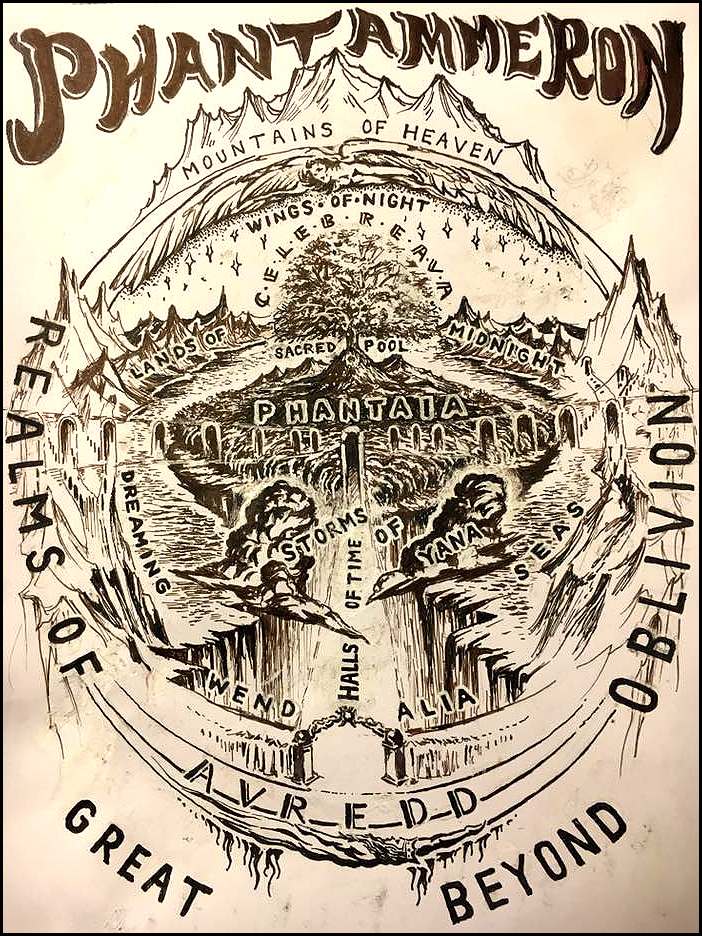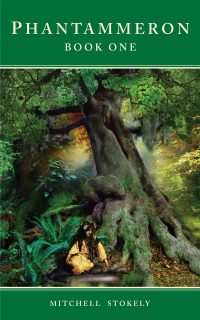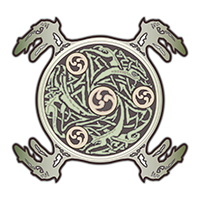In my new novel, Phantammeron Book One, there is a rich and persistent fantasy cosmology in which the worlds I create extend into vast spaces, both metaphysical and spiritual. In the illustration above, I tried to outline a crude depiction of the related “worlds” or realms in my Phantammeron books, and their relationship to each other in a conflicted and yet psychological landscape forged from my imagination.
My cosmology, more than most fantasy novels, is the bedrock or foundation of my fantasy stories, forming the basis for its creation, and holding firm the spiritual and mytho-poetic concepts critical to the meaning in my stories. For example, the “Lands of Midnight” are both a metaphor for the surrounding darkness of both our universe and what lies beyond it, and yet a dark and foreboding physical place used in many ways to doom the brighter forested lands of Phantaia. But Midnight also represents the edge of the conscious Jungian mind; the borders of the Self that are both vaguely hinted at in deeply mythic and religious text and whose shadowy world is only penetrated by the memory of the conscious mind in the world of dreams seen from afar upon awakening.
These strange lands and worlds are endless, and bounded only by the limitations of the reader and writer and their shared imaginations in my novels. But they retain importance in not just sustaining story and building fantasy worlds, but also in expanding the power of the unconscious mind in hiding from us yet sustaining our lives. This fact cannot be underestimated. For that reason I have sought to fill my novels in excess with descriptions of these mystical places, and through this illustration give a glimpse of what they represent as far as fantasy landscapes that extend through the author’s mind into unknown and boundless depths.
Transcending the psychological and the fantasy world, they also enter into spiritual realms only hinted at in religious texts of the ancients. From the symbolic Mandala’s of the Hindu’s, to Buddhist levels of Consciousness, to symbolic trees representing either the Knowledge of Good and Evil to the Norse Tree of Wisdom, these “spiritual places” identify with other-worldly concepts of our God, who often connects us to him through symbols of nature, and landscapes of the mind meant to awaken the mythology of ourselves, our world, and of our Creator.
In that sense, using shallow forms of fantasy fiction world building has been wholly abandoned in my work and forged anew. And so I have used fantasy worlds to start to transcend the entertainment value of map making and novel writing and build such places to serve greater purposes in connecting the reader to deeper concerns. That has been my goal all along in writing the Phantammeron novels as a whole; the idea that through my fantasy worlds and their strange landscapes, I could touch the reader’s deeper imaginings, and penetrate the darker unconscious of their own fantasy landscapes not yet touched by modern fantasy novels and literature. Through the visuals in my writing and their symbolic connection to vast imaginary forests, seas, and mountains, to forms of transcendent light and dark, evil and goodness, chaos and law, and the religious concepts of divinity found in natural forms, I have tried to enrich the readers experience and transform them and my stories into something much deeper; something akin to religious experience itself. In that sense I have created my mythopoeia to drive home the power of using fantasy landscapes and endless worlds to touch on more in my readers, and stir in them something fresh, emotional, stirring, and personally transformative.
For this reason, I encourage you to get the first Phantammeron Book One novel, as it contains the initial stories of how the world was made by the Essence Eternal for his children, and their symbolic role in its making or unmaking. In this book is the best expression of these imaginary places shown in the illustration above, of their Creation Story, and their place in anchoring my characters and their stories to the spirit of the vast and limitless landscapes I’ve created for them. As newer books are released, more focus will be placed in the characters and their meaning and purpose in the grander tale. The land then gets translated yet again in meaning tied to their lives. Yet the cosmology of the older world will remain to haunt them from afar and drive home their own fallen and tragic origins.
In later books, new worlds get made with more earthly places. And so I build on the great Twilight Heavens of the Gods depicted in this early illustration, which in its conception was meant simply as the “initial” world made for the Gods; a paradise surrounded by sinister forces whose very design was meant to depict the rare beauty of Phantaia, yet as a place under threat by a perpetual evil.
But these later worlds and places shall also pivot and turn away from this vaster landscape, yet looking back upon this earlier heaven of the Gods, reflecting in its mythology, building on its rich meaning, and using its sad and tragic history and landscape as both a source of hope and yet of at times hopelessness. In that sense, the first novel and this illustration will always have great meaning to me and to all the books. The reader, it is hoped, will study it and use it as a source of “hidden truths”, as later novels reflect back on its secretive spiritual and symbolic meaning in the overall Phantammeron tale.
– the Author




